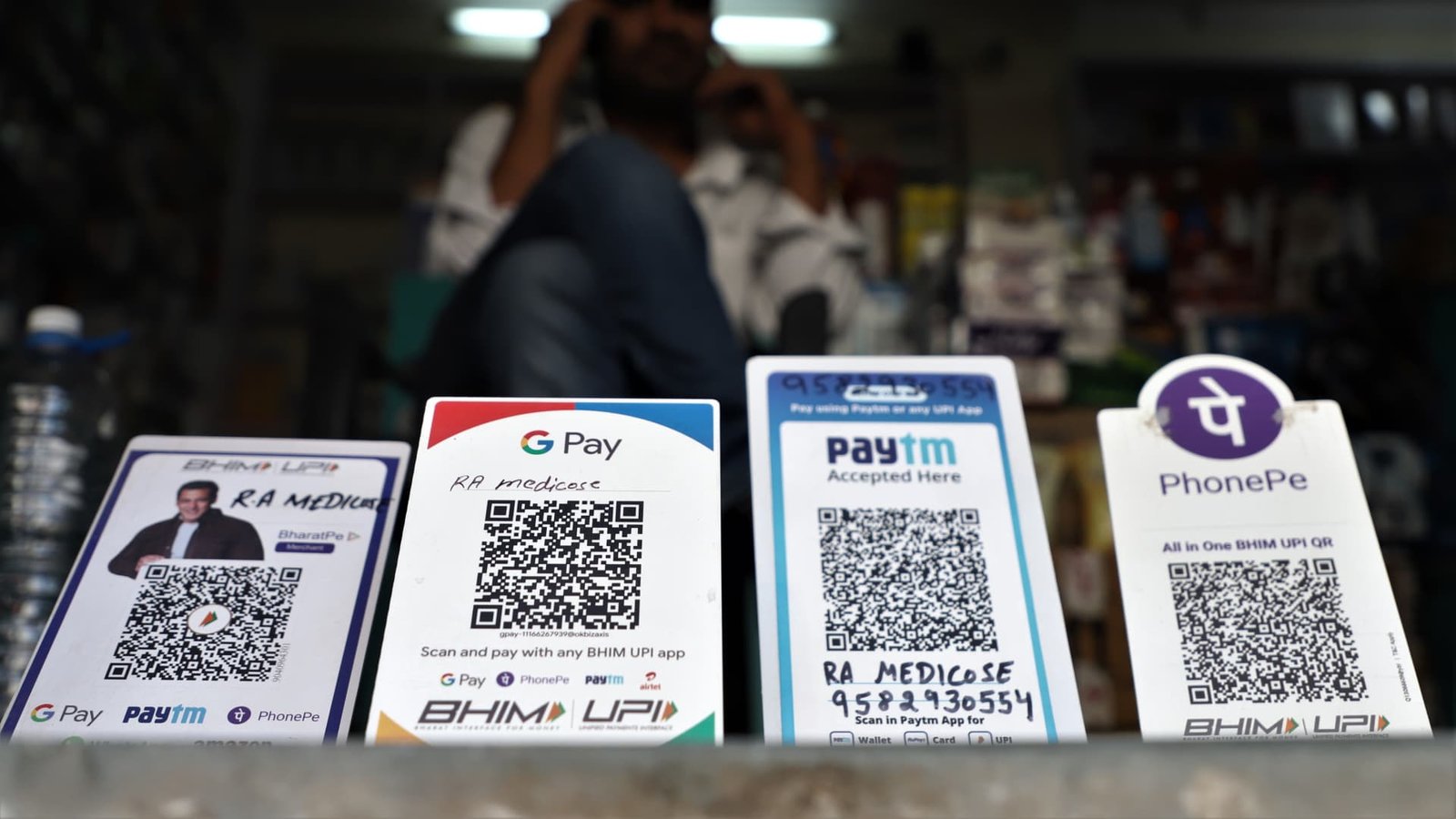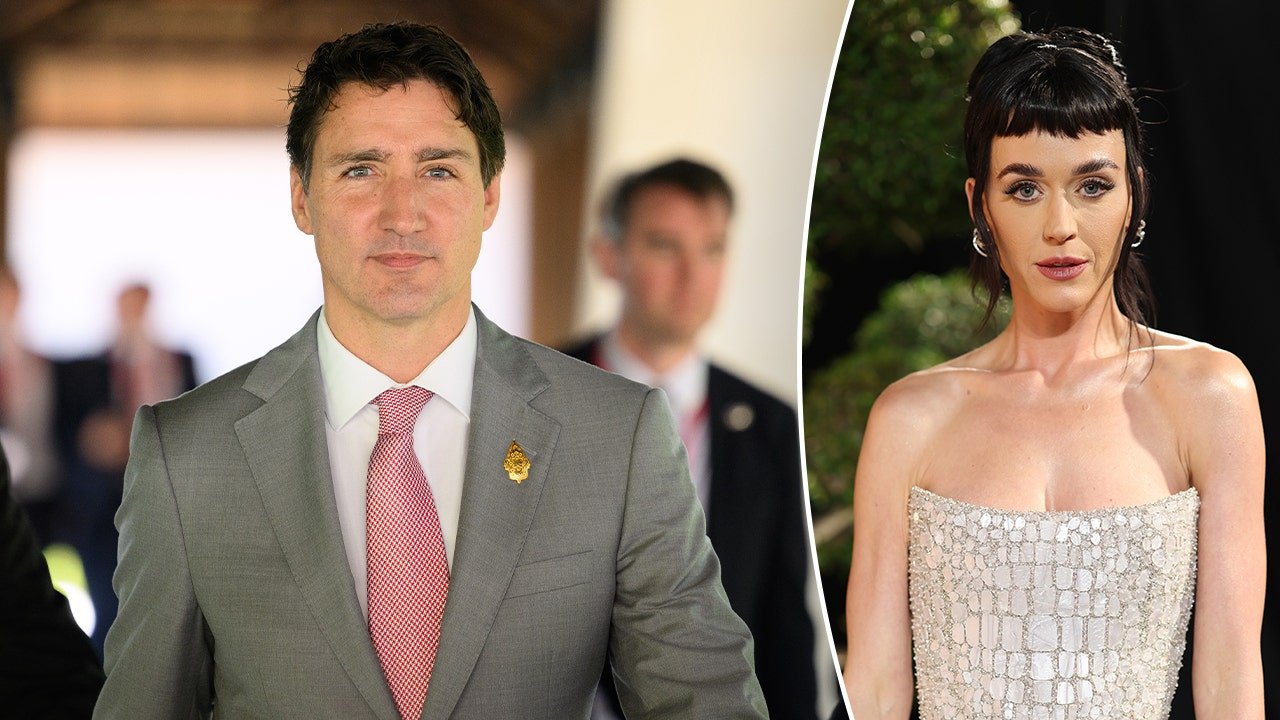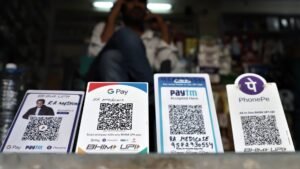
UPI’s global push seems an economic strategy
2025-10-16 07:25:36
Paytm, PhonePe, Google Pay (Gpay) and Bhim UPI QR Codes (Standee) are kept outside for cashless payments at a medical store in Gurugram on the outskirts of New Delhi, India on May 16, 2020.
Nasser Kashro | Nour Photo | Getty Images
This report is taken from CNBC’s ‘Inside India’ newsletter this week which brings you timely and insightful news and market commentary on the emerging powerhouse. Subscribe here.
The big story
Money appears to move much faster in India than the people executing the transactions, and this was never more evident than at the Global FinTech Festival held at the Bandra Kurla complex in Mumbai last week.
As delegates navigated traffic jams in India’s financial capital and dealt with the lack of last-mile connectivity, inside the conference halls, the product launches highlighted how transferring money has become as easy as sending a WhatsApp message.
What’s driving this digital transformation is India’s Unified Payments Interface, or UPI, breaking out of its domestic box and connecting itself to the global money network.
The major announcement at the FinTech Festival came from PayPal, with UPI in India becoming the first payment system to be integrated into the PayPal World platform for international transactions.
“Everywhere I go, India comes up,” PayPal CEO Alex Kress said at GFF 2025, noting the country’s growing reputation as a place where talent, capital and business opportunities converge.
PayPal is helping India’s push to expand UPI globally, with experts saying the payment system is now part of the country’s diplomatic toolkit. One speaker at the GFF called it “Indian fintech diplomacy.”
Just a day before PayPal’s announcement, Indian Commerce Minister Piyush Goyal launched UPI in Qatar – the eighth overseas destination to join the payments platform – highlighting the growing economic integration between the two countries. “Our people will be able to trade more, trade smarter and at a lower cost,” Goyal said.
The deeper you look into UPI’s transaction numbers, the more its international rollout begins to look less like a technology story and more like an economic strategy.
According to the Indian government, UPI, launched by the National Payments Corporation of India in 2016, leads the world in real-time payment processing, handling more than 640 million transactions daily, compared to Visa’s 639 million.
The global rollout of UPI comes at a time when Indian travelers and foreign workers are driving record volumes of cross-border transactions. It is not just an opportunity for UPI but also for international money transfer platforms like Wise and Briskpe.
“India’s needs for cross-border payments are growing from multiple directions,” said Tanya Bhardwaj, head of South Asia expansion at Wise, which claims to support 10% of incoming remittances into India.
“Indians are spending longer periods abroad and need better tools to manage money across borders,” Bhardwaj added.
First of all, foreign transaction opportunities in India are growing. In 2024, 30.8 million Indians traveled abroad – 10.8% jump from A Earlier in the year.
India’s international spending will exceed $35 billion in 2024, according to a report United Nations Tourismhas witnessed rapid growth over the past few years as young professionals, tourists and business people increasingly travel abroad.
Facilitating money transfers
India’s plans to expand UPI to over 20 countries by March 2029 are set to “transform” cross-border remittances, according to an NPCI-BCG report released at GFF.
India was the largest recipient of remittances between low- and middle-income countries in 2024 at $129 billion, followed by Mexico at $68 billion and China at $48 billion, according to World Bank estimates.
“India is much more involved in global financial transactions than its goods exports would suggest. This is due to a) significant services trade b) remittance inflows and outflows and c) capital market transactions,” said Amitendu Palit, a senior research fellow at the Institute of South Asian Studies.
“All of this will be facilitated through UPI and interoperability with other digital payment platforms,” he said, adding that UPI’s tie-ups with PayNow in Singapore and PromptPay in Thailand are “already giving good results”.
For the fiscal year ending March 2025, India It is said Remittances more than doubled to $135.46 billion, from $61 billion in the fiscal year ending March 2017.
Experts say that traditional banks and Forex service providers usually mark up the exchange rate by 3% to 3.5% and are not transparent about it.
“You might see an ad for ‘zero fees,’ but they make money by giving you an exchange rate that’s worse than the actual mid-market exchange rate — the one on Google. Then there are additional fees — dynamic currency conversion fees, foreign transaction fees, ATM withdrawal fees, account maintenance fees,” Bhardwaj said.
Experts said these high hidden costs are not just a pain for the end recipient but also cause concern for the government.
If the government can reduce transaction costs by offering UPI payment service for cross-border transactions at competitive rates, it will also push other service providers to reduce their costs. “Since UPI infrastructure is also cheaper compared to other networks, the overall cost of remittances in the economy comes down, not only for India but also for the partner country,” the NPCI-BCG report said.
Priyanka Kishore, chief economist at Asia Decoded, said lower transaction costs meant more remittances were coming into the country rather than getting lost with currency brokers.
“Increasing remittances and a boom in digital exports have pushed the current account deficit to less than 1% of GDP even as the trade deficit in goods has widened to about 8% in the past two years,” she said. Remittances have a positive impact on India’s balance of payments, as they reduce the current account deficit, while providing a stable source of foreign exchange.
The Indian Canadian dollar is expected to reach 1.2% of GDP in the current fiscal year, while trade data show that the deficit widened by almost 32% to $32.5 billion in September from a year earlier.
No wonder UPI’s going international is a cause of pride and celebration for the government.
“UPI’s international expansion is great for the ecosystem as it confirms that the Indian payment infrastructure can work globally. It also sets a standard for what Indian consumers expect – instant, transparent and seamless transactions,” Bhardwaj said.
Top TV picks on CNBC

Ravi Swarup, President – Consumer Products, Bain India, said, “The evolving taste of consumers in India is driving growth in the electronics sector.”

India’s growing demand for AI-driven data centers is accelerating the adoption of liquid cooling technologies, said Rajeev Ranjan, IDC Asia Pacific.

Pankaj Murarka, CEO and CIO of Renaissance Investment Managers, said the Indian stock market is currently the most expensive in the world but he still expects a rise in the second half of the year.
Need to know
Google is investing $15 billion to build a data center in India The American technology giant will invest $15 billion To build data center capacity To establish a new AI center in South India over the next five years. It will be Google’s largest AI center in the world outside the United States
LG Electronics India outperforms its parent in terms of market capitalization. The company’s shares rose as much as 50% on its debut, following its initial public offering He saw the strongest demand Indian IPO since 2008, led by institutional investors.
There is a row brewing in the board of Tata Trusts, which controls 66% of Tata Sons. The origin of the current dispute is Tata Sons’ overreach You need to get prior approval From Tata Trusts for any major financial investments. Some trustees argue that this undermines the rights of the Tata Trusts.
Quote of the week
The Indian government has injected fiscal stimulus worth $30 billion, which is already reflected in the recovery in consumer demand. The second half will be better than the first half for India and we expect earnings to return to mid-teens growth in the next fiscal.
— Pankaj Murarka, CEO and CIO, Renaissance Investment Managers
In the markets
the Stylish 50’s The index and BSE Sensex were trading 0.4% higher as of 9:45 am local time. The indices rose by 7.5% and 6%, respectively, this year.
The yield on 10-year Indian government bonds reached 6.490%.

Coming
October 17: Shares of Canara HSBC Life Insurance Company are on the stock exchanges
October 21: National Stock Exchange closed for Diwali
October 22: Partial closure of the National Stock Exchange on the occasion of Diwali
Every weekday, CNBC’s ‘Inside India’ news show brings you news and market commentary on powerful emerging companies and the people behind their rise. Stream the show live on YouTube and catch highlights here.
Show times:
we: Sunday-Thursday, 23:00-0000 ET
Asia: Monday to Friday, 11:00-12:00 Singapore/Hong Kong time, 08:30-09:30 India time
Europe: Monday to Friday, 0500-06:00 CET
https://image.cnbcfm.com/api/v1/image/106797168-1605506742034-GettyImages-1213174164.jpg?v=1626425182&w=1920&h=1080

























إرسال التعليق